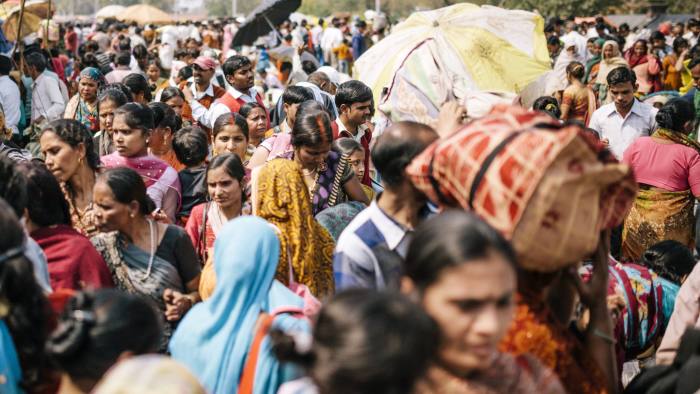Gideon Rachman

China has spent the past decade notching up firsts — world’s largest manufacturer, world’s largest exporter, world’s largest foreign reserves, world’s largest market for vehicles.
In 2014, the International Monetary Fund even reported that, ranked by purchasing power, China is the world’s largest economy.
But there is one “world’s largest” title that China may have lost.
New demographic research suggests that India, not China, could be the most populous country in the world — with unofficial estimates of China’s population revised down to just under 1.3bn, compared with India’s population of 1.33bn.
That news could feed the growing sense in India, that while the rise of China has been the global story of the past 30 years, the next 30 will be India’s time to shine.
Population trends in India certainly look more favourable for long-term economic growth than those in China.
It is not just that India’s population may have surpassed that of China and will grow faster in future. More important, the Indian population is significantly younger than that of China, which means that it will have a larger working-age population than China, and fewer retired people to support.
The recent history of Japan demonstrates that an ageing and shrinking population has a powerful negative effect on economic growth.
These demographic forces may already be feeding through into growth rates.
After decades in which India had to put up with jibes about the “Hindu rate of growth”, India is growing faster than China, with growth projected to exceed 7 per cent this year, compared with China’s official figure of 6.5 per cent.
But there are also some powerful qualifications to the idea that India is poised to catch up and then outstrip China.
First, the Chinese economy is already five times larger, in real terms, than that of India.
That means that even though India is currently growing slightly faster than China in percentage terms, the gap in the sizes of the two economies is growing, not shrinking.
Second, while demography favours India, in other important respects, China is better placed.
Thirty per cent of the Indian population is illiterate, compared with under 5 per cent of the Chinese population.
China’s infrastructure is also far superior to that of India, reflected in roads, railways and basic sanitation.
Half of Indians still lack access to basic toilet facilities.
These kinds of comparisons are more than a mere parlour game.
They matter because China and India are the two emerging superpowers of the 21st century.
The nations are already engaged in a low-key geopolitical and ideological struggle.
India has reacted with alarm to China’s ambitious plans to build infrastructure links across Asia, fearing that they will create a Chinese sphere of influence that will encircle India.
When China hosted its “Belt and Road” forum in Beijing last month to promote plans to spend billions on infrastructure links across Eurasia, more than 100 countries sent official delegations — but India stayed away.
The Indians fear that China is re-creating a tributary system in which Asian economies are bound into an economic system in which “all roads lead to Beijing”.
The implications of these infrastructure developments are strategic and economic.
At a time when China’s navy is growing fast, Chinese-funded ports in Sri Lanka and Pakistan are regarded with particular suspicion in Delhi.
Growing ties between Pakistan and China create anxiety in India, which has fought four wars with Pakistan.
Beijing and Delhi have their own unresolved territorial dispute, dating back to the war they fought in 1962, and the Indians worry that China is increasing pressure over its claims on the Indian province of Arunachal Pradesh.
Military budgets in China and India have been rising sharply.
China has launched its second aircraft carrier and is working on a third.
And India has become the world’s largest importer of weaponry, after Saudi Arabia.
The Indians have also stepped up military exercises with the US and Japan — two countries regarded as strategic adversaries by China.
Shashank Joshi of the Royal United Services Institute in London argues that, as strategic tension rises, Indian-Chinese relations are “in their worst state for over a decade”.
One particular Chinese gripe is the fact that the Tibetan spiritual leader, the Dalai Lama, detested by Beijing, continues to be based in India.
His presence points to the ideological element in the rivalry between India and China.
Chinese analysts have often contrasted the success of their development model with the slower growth produced by India’s “chaotic” democracy.
Indians like to respond that their democratic system will ultimately prove more stable than China’s one-party state.
There is also a moral aspect to this argument.
Indians boast of freedom of speech and independent courts.
The Chinese respond that the ordinary citizen in China lives a more comfortable and dignified life than the average Indian.
These arguments reflect the fact that China and India represent not just rival powers but also rival political systems, ideologies, even civilisations.
Western political analysts are preoccupied by the emerging power struggle between the US and China.
But as economic and political power shifts to Asia, it is the contest between China and India that may ultimately shape the 21st century.
Aucun commentaire:
Enregistrer un commentaire